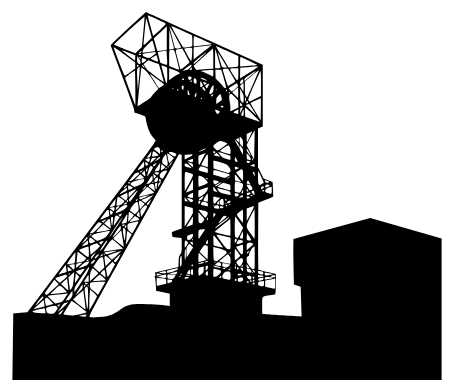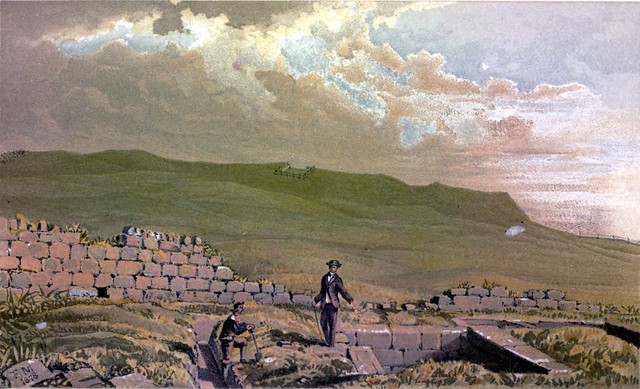Topics > Industry and Work > Mining > From the Gin to the Newcomen Engine
From the Gin to the Newcomen Engine
Extract from: The Life of George Stephenson and of his son Robert Stephenson, by Samuel Smiles, 1881.
Among the upper-ground workmen employed at the coal-pits, the principal are the firemen, engine-men, and brakesmen, who fire and work the engines, and superintend the machinery by means of which the collieries are worked. Previous to the introduction of the steam-engine, the usual machine employed for the purpose was what is called a "gin." The gin consists of a large drum placed horizontally, round which ropes attached to buckets and corves are wound, which are thus drawn up or sent down the shafts by a horse travelling in a circular track or "gin race." This method was employed for drawing up both coals and water, and it is still used for the same purpose in small collieries; but where the quantity of water to be raised is great, pumps worked by steam-power are called into requisition.
Newcomen's atmospheric engine was first made use of to work the pumps, and it continued to be so employed long after the more powerful and economical condensing engine of Watt had been invented. In the Newcomen or "fire-engine," as it was called, the power is produced by the pressure of the atmosphere forcing down the piston in the cylinder, on a vacuum being produced within it by condensation of the contained steam by means of cold-water injection. The piston-rod is attached to one end of a lever, while the pump-rod works in connection with the other, the hydraulic action employed to raise the water being exactly similar to that of a common sucking-pump.
The working of a Newcomen engine was a clumsy and apparently a very painful process, accompanied by an extraordinary amount of wheezing, sighing, creaking, and bumping. When the pump descended, there was heard a plunge, a heavy sigh, and a loud bump; then, as it rose, and the sucker began to act, there was heard a creak, a wheeze, another bump, and then a rush of water as it was lifted and poured out. Where engines of a more powerful and improved description were used, as is now the case, the quantity of water raised is enormous—as much as a million and a half gallons in the twenty-four hours.
Growth of Coal Mining < Smiles, 1881 > The "Lads Belaw"











